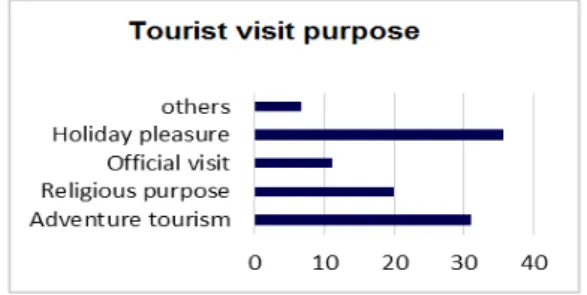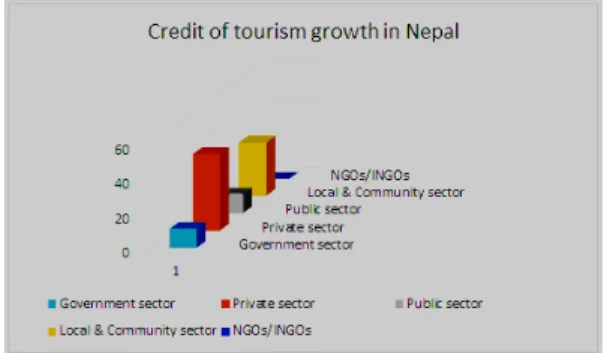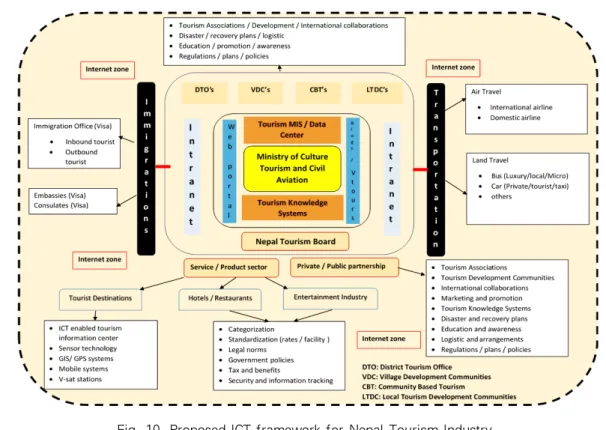Journal of Internet Computing and Services(JICS) 2016. Dec.: 17(6): 113-122 113
An ICT Framework for Tourism Industry of Nepal:
Prospect and Challenges ☆
Deepanjal Shrestha
1Seung Ryul Jeong
2*ABSTRACT
Information and Communication Technology (ICT) has revolutionized the world and has profound impact on the social and economic development of a country. Implementation, practice and accessibility of ICT is viewed as an integral part of any countries’
strategy today. These new technologies are becoming popular due to their ability to produce, distribute and provide instant access to massive information in no time. ICT has pervaded almost every aspect of human endeavor that may include health, education, economics, governance, entertainment etc. Tourism is one such vital industry that find enormous application of ICT in its strategic and operational level, to promise long term benefits and enhance economic growth. Tourism industry in western world and some developed countries of Asia have applied ICT for more than 30 years, and have gained tremendous benefits. Nepal which is also growing as one of the favourite tourist destinations lacks proper implementation of ICT in this industry. In our study we examined how the ICT can play a vital role in developing the tourism industry of Nepal. This study is an exploratory research based on primary data collected from tourist visiting Nepal, supported by information from tour operators, government agencies, NGOs and INGOS. A framework is devised on the basis of data and information collected and finally, discussions elaborate on the prospect and challenges of implementation of ICT in tourism industry of Nepal ̀ .
☞ keyword : ICT, information access, internet, data center, tourism industry.
1. Introduction
Tourism has grown as an industry worldwide in the last two and half decades and has outshined traditional industries to become one of the world's largest and fastest growing economic activities [4] [5]. Tourism as an Industry has attracted many scholars around the world to conduct studies and research in tourism and to find out growth, impact and trends occurring.
Many scholars have found that there is a huge transition in the current times due to penetration of Information and Communication Technology [16] in this industry. The development of Information and Communication Technology in terms of faster broadband, Web 2.0, intelligent applications, Mobile systems, GPRS, Geo Informatics, WAP, Social
1
Dept. of MIS, Pokhara University, Nepal
2
Graduate School of Business IT, Kookmin University, Seoul, 136-702, Korea
*



